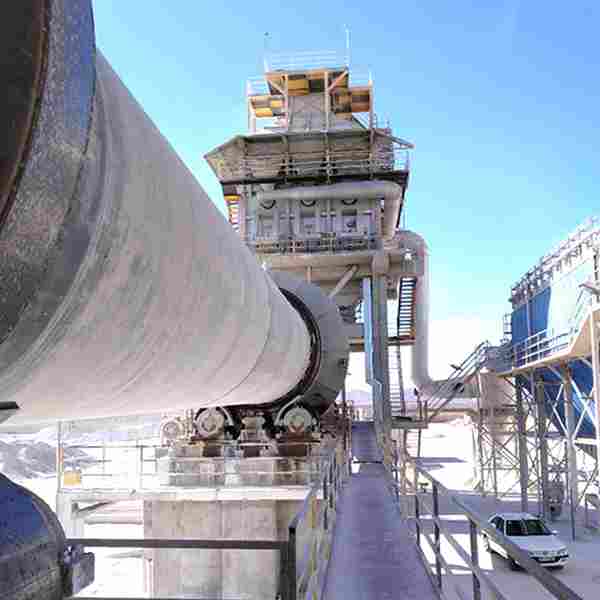Rotary kilns are large cylindrical furnaces used in various industrial processes, including cement manufacturing, mineral processing, chemical production, and waste incineration. These kilns are designed to operate at high temperatures, typically from 800 to 1500 degrees Celsius, and require substantial amounts of energy to achieve the desired thermal processing of materials. As energy costs continue to rise and environmental concerns become more prominent, optimizing the energy efficiency of kilns has become a critical focus for many industries.
Understanding the Energy Profile of Rotary Kilns
To effectively improve energy efficiency in kilns, it is crucial to have a thorough understanding of the energy profile of the kiln. The kilns offered by Rotary Kiln Manufacturer in India typically consume energy in various forms, including:
- Thermal energy: This is the primary source of energy consumption in
- kilns and is required to raise the temperature of the material being processed to the desired level. It is essential to accurately measure and monitor the thermal energy input to the kiln to optimize its utilization.
- Electrical energy: Require electrical energy for driving motors, fans, and other equipment, such as pumps and conveyors. Ensuring efficient motor and equipment operations and minimizing unnecessary electrical energy usage can contribute to overall energy savings.
- Heat losses: They lose heat through various mechanisms, such as radiation, conduction, and convection. Reducing heat losses from the kiln shell, hood, and other components can save energy.
Strategies for Improving Energy Efficiency in Rotary Kilns
- Kiln Design and Operation, Optimization
The design and operation of kilns can significantly impact their energy efficiency. Kiln size, shape, and configuration, as well as the type and quality of refractory materials used, can affect the thermal performance of the kiln. Proper kiln sizing and design, including optimizing the length-to-diameter ratio, can minimize heat losses and reduce energy consumption.
Optimizing the kiln operating parameters, such as rotational speed, feed rate, and oxygen levels, can also impact energy efficiency. Proper control of these parameters can ensure that the kiln operates at optimal conditions, minimizing energy waste and improving overall efficiency.
- Heat Recovery Systems
Heat recovery systems can capture and reuse waste heat from the kiln, reducing the thermal energy required to heat the material. One common heat recovery system is a preheater, which uses the hot exhaust gases from the kiln to preheat the raw material before it enters the kiln. This can significantly reduce the energy needed to raise the material’s temperature to the desired level, resulting in substantial energy savings.
Another heat recovery system is a regenerative burner, which uses the hot exhaust gases from the kiln to preheat the combustion air. This can reduce the fuel needed to generate the required heat for the kiln, resulting in energy savings.
- Insulation and Refractory Maintenance
Proper insulation and refractory maintenance are crucial to minimizing heat losses from the kiln shell and other components. Insulating the kiln shell and other areas prone to heat losses can reduce the heat escaping from the kiln and improve energy efficiency.
Similarly, maintaining the refractory lining in the kiln is essential to prevent heat losses through the kiln walls and ensure efficient heat transfer to the material being processed.
- Clinker Cooling Optimization
Clinker, the intermediate product in cement manufacturing, needs to be cooled before it can be transported and stored. The cooling process also presents an opportunity for energy efficiency improvements. Optimizing the clinker cooling process can reduce the energy required for cooling and contribute to overall energy savings in the kiln system.
One approach to optimize clinker cooling is to use a grate cooler with high-efficiency cooling elements, such as inclined grate plates or hydraulic coolers. These can improve the heat transfer between the clinker and the cooling air, reducing the energy needed to cool the clinker to the desired temperature.
- Alternative Fuels and Raw Materials
Using alternative fuels and raw materials in kilns can also improve energy efficiency. Alternative fuels, such as biomass, waste-derived fuels, and tires, can replace traditional fossil fuels, reducing the overall energy consumption of the kiln. Similarly, using alternative raw materials, such as slag or fly ash, can reduce the energy requirements for clinker production.
However, it is important to ensure that the use of alternative fuels and raw materials does not compromise the quality and performance of the final product. Proper characterization and testing of alternative fuels and raw materials and careful monitoring of their impact on kiln operations are essential to maintain product quality and ensure safe and efficient kiln operations.
- Kiln Shutdown and Startup Procedures
Proper shutdown and startup procedures for Ball Mill Grinding Plant can also impact their energy efficiency. During the shutdown, minimizing heat losses by properly insulating the kiln and other components is important.
Similarly, during startup, following proper heating and warming-up procedures is crucial to minimize energy waste and ensure efficient kiln operations.
- Kiln Maintenance and Cleaning
Regular maintenance and cleaning of the kiln can also improve energy efficiency. Proper cleaning of the kiln’s interior and exterior surfaces can remove dust, dirt, and other deposits, reducing heat transfer and increasing heat losses.
Regular inspection and maintenance of kiln components, such as burners, fans, and seals, can also ensure optimal performance, reducing energy waste.
Conclusion
Energy efficiency in kilns is essential not only for environmental sustainability but also for the economic competitiveness of the cement industry. Cement manufacturers can significantly reduce their energy consumption, lower their carbon footprint, and achieve long-term business success by adopting a holistic approach encompassing kiln design, operation, maintenance, and employee engagement.
Implementing energy efficiency strategies and best practices in rotary kilns can pave the way toward a more sustainable and greener cement industry, contributing to global efforts to combat climate change and achieve a more sustainable future. KNC Mineral Technologies is the best Rotary Kiln Supplier in India to look out for.


